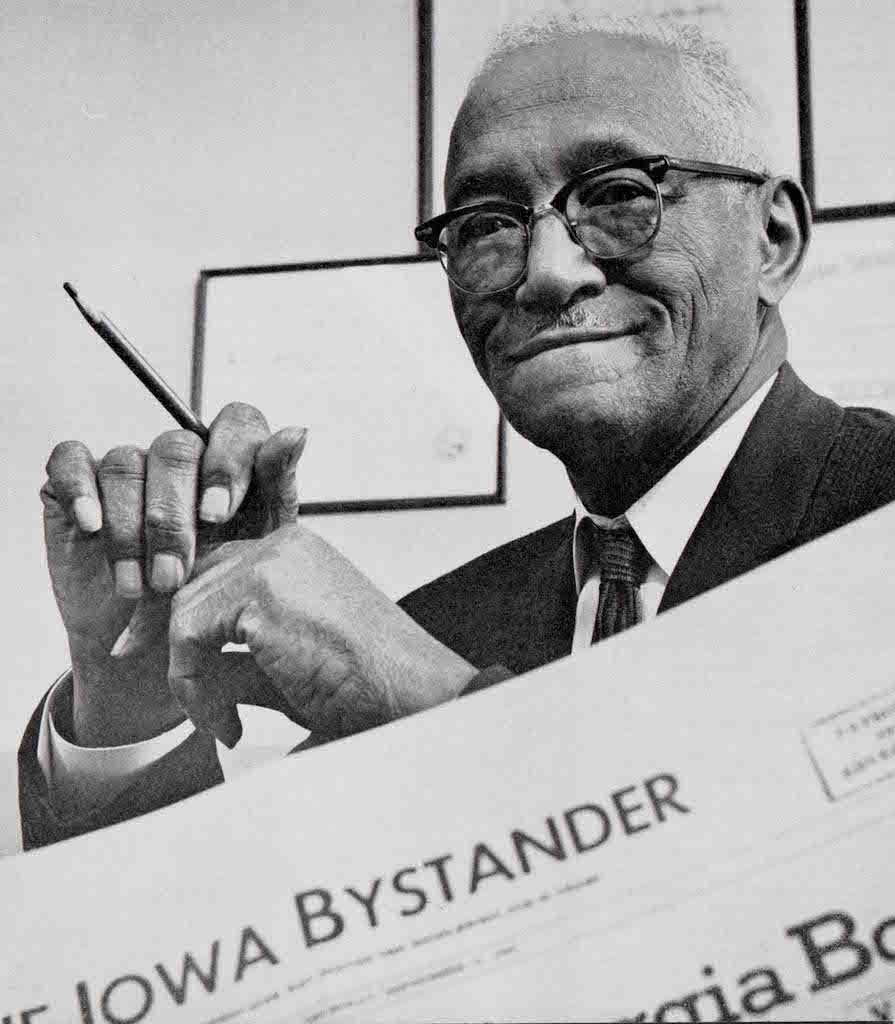
James B. Morris Sr. was a World War I veteran, lawyer and noted civil rights activist. he is best known as the longtime owner of the Bystander, one of the nation’s first black newspapers published west of the Mississippi River. Image courtesy of Joan Liffring-Zug Bourget Collection, State Historical Society of Iowa, Iowa City, Iowa
By John Skipper
James B. Morris Sr. was a battle-scarred World War I veteran who dabbled at several professions before becoming one of Iowa’s great 20th century journalists.
Morris, an African American in a state with an overwhelmingly white population, was the owner and editor of the Iowa Bystander for nearly 50 years, running one of the first commercial black newspapers west of the Mississippi River.
Though his readership was relatively small, his reputation was so large that at one point, when the newspaper was in danger of folding because of financial problems, white businessmen who respected Morris raised funds to help him stay in business.
The Bystander was founded in Des Moines in 1894 and got its name because of a popular contemporary newspaper column by the same name. But under Morris’ leadership, the newspaper was hardly a bystander in reporting the news.
Indeed, as historian Henry G. LaBrie noted shortly after Morris’ retirement in 1971, “Although its name suggests non-involvement and inaction, the Bystander, under Morris’ direction, was a crusader for equal opportunity and sought to prevent indifference in the area of race relations.”
He took on the Klu Klux Klan many times in his career and once had to fend off KKK members with gunfire when they threatened his home and family. Yet, in his later years, while encouraging blacks to get involved in the civil rights movement, he urged them to do it without violence.
While Morris made a name for himself as a publisher in the Midwest, his roots were in the deep South. He was born in Atlanta, Ga., on Oct. 15, 1890. The youngster got an early introduction to newspaper work when he got a job, at the age of 12, in a print shop in the Atlanta suburb of Covington. A half-century later, in reminiscing about his career, he said he first got “printer’s ink in his blood” as a pre-teen at the little shop in Covington.
But Morris’ life took many twists and turns, including being a soldier and even a county official, before spreading his wings in the journalism community in Des Moines.
TO READ THE ENTIRE STORY AND OTHER FASCINATING STORIES ABOUT IOWA HISTORY, subscribe to Iowa History Journal.
